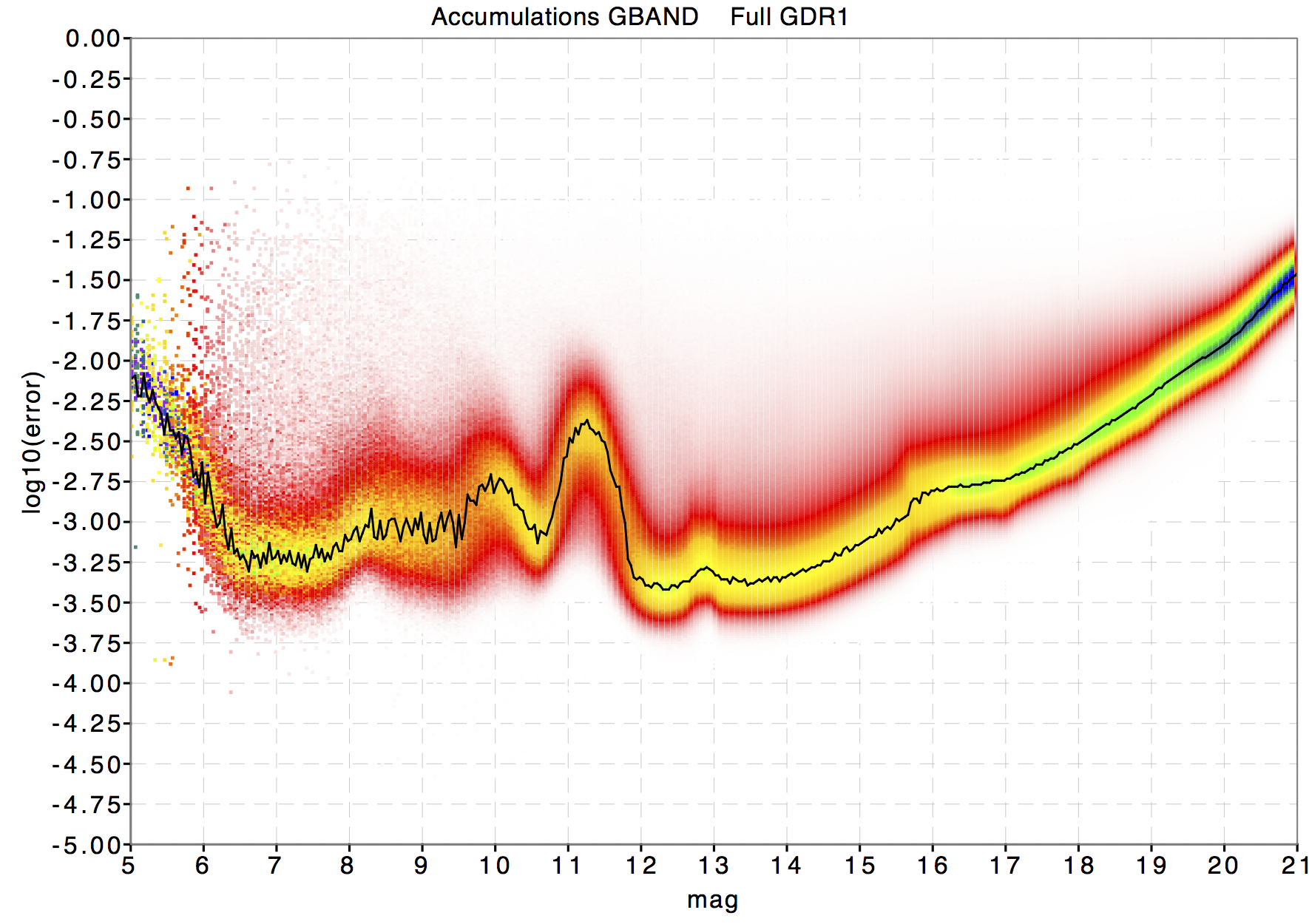IoW_20161216 - Gaia
Image of the Week |
|||
Standard uncertainties for the photometric data (in Gaia DR1) |
|||
 |
|||
|
This plot shows the distribution of the estimated uncertainties on the weighted mean G-band photometry as a function of magnitude. The colours indicate the density of data points, from low (red) to high (blue) on a logarithmic scale. Credits: ESA/Gaia/DPAC |
|||
|
The first Gaia Data Release (Gaia DR1, September 2016) included photometric measurements in the G-band for more than 1.1 billion sources observed in the first 14 months of operations. The figure shown on this page comes from the high-level summary paper of the photometric processing: “Gaia data release 1 - The photometric data” by F. van Leeuwen et al. More details on the photometric processing are provided in the accompanying papers: Carrasco et al. (2016) on the principles of the calibration including a detailed descriprion of the definition of the models and Evans et al. (2017) on the results of the extensive validation analysis performed on the data before the release. The photometry published in Gaia DR1 is the output of the first cycle of operations, with no iteration yet between the various systems and preliminary calibrations for some aspects of the instrument. In the figure above, which is Figure 5 of the original paper, the distribution of the estimated uncertainties on the weighted mean G-band photometry as a function of magnitude is shown. The various bumps in the distribution are the result of saturation effects (for magnitudes brighter than 12) and minor inconsistencies between different calibration regimes, caused by different window class and gate configurations. For the faint stars the main limitation is the photon noise, which is also the theoretical accuracy limit. For the brighter stars the accuracies are still affected by some calibration model imperfections, which we are confident will be gradually reduced in future releases. Already at this stage, the photometric accuracy reaches the 3-4 milli-magnitude level, although other validation analyses show that there may be systematic effects at the 10 mmag level particularly around G=11. Future releases will include improved G-band photometry, colours and low-resolution spectra for all sources, thus enhancing the potential of the Gaia catalogue. |
|||
|
Credits: ESA/Gaia/DPAC, F. van Leeuwen, D. W. Evans and F. De Angeli for the Gaia CU5 and Gaia DPCI teams [Published: 16/12/2016] |
|||
- Removed a total of (9) style text-align:center;
- Removed a total of (4) style text-align:justify;
- Removed a total of (1) border attribute.
- Removed a total of (1) cellpadding attribute.
- Removed a total of (1) cellspacing attribute.
Image of the Week Archive
- Removed a total of (1) border attribute.
- Removed a total of (1) cellpadding attribute.
- Removed a total of (1) cellspacing attribute.








































 Sign in
Sign in
 Science & Technology
Science & Technology